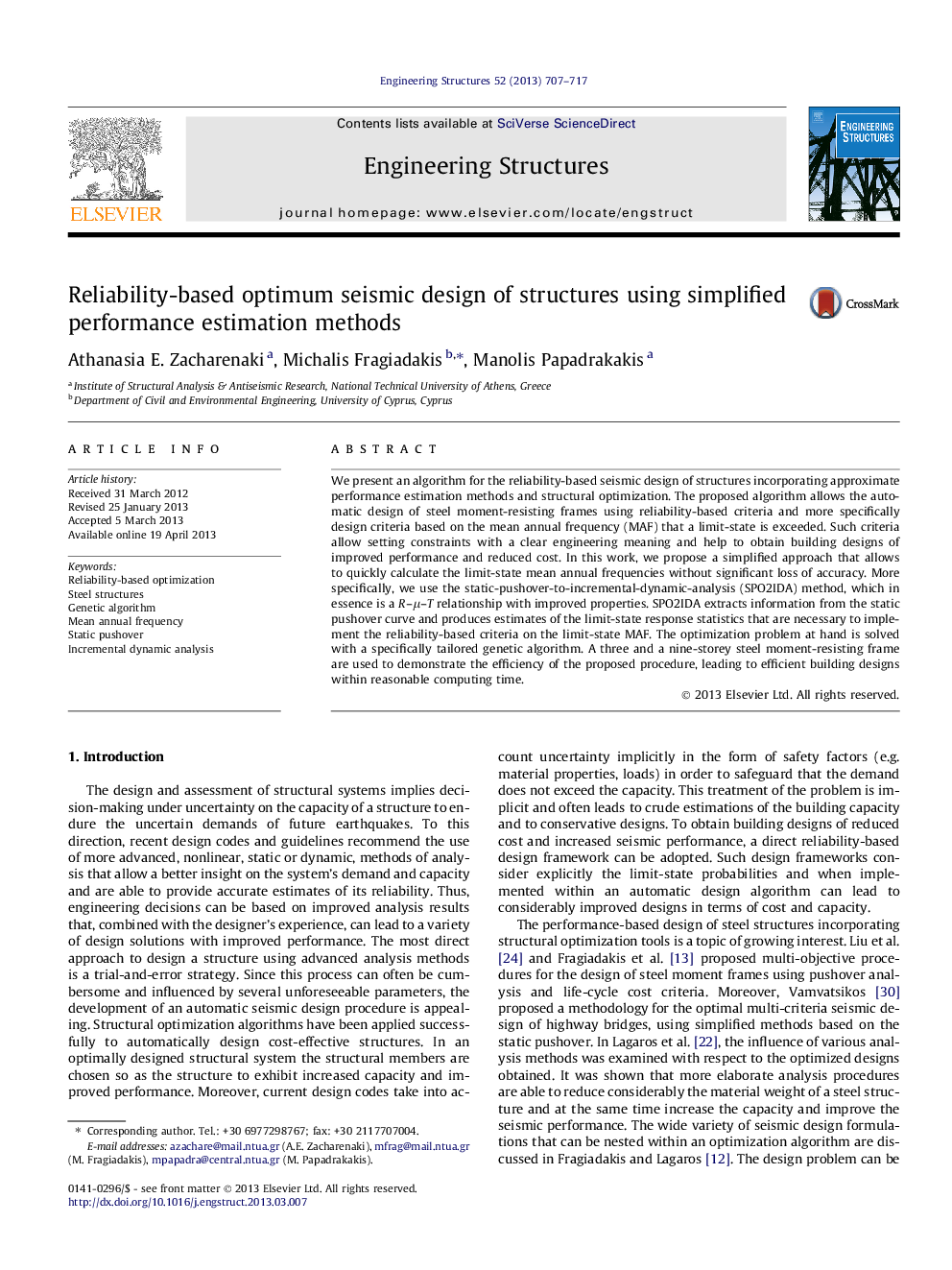| Article ID | Journal | Published Year | Pages | File Type |
|---|---|---|---|---|
| 266988 | Engineering Structures | 2013 | 11 Pages |
•We present a method for seismic design using simplified tools and optimization.•Reliability criteria based on the limit-state mean annual frequency are adopted.•The simplified calculations are based on static pushover and the SPO2IDA tool.•The optimization problem is solved with a specifically tailored genetic algorithm.•Two case studies of a 3 and a 9-storey steel moment-resisting frames are presented.
We present an algorithm for the reliability-based seismic design of structures incorporating approximate performance estimation methods and structural optimization. The proposed algorithm allows the automatic design of steel moment-resisting frames using reliability-based criteria and more specifically design criteria based on the mean annual frequency (MAF) that a limit-state is exceeded. Such criteria allow setting constraints with a clear engineering meaning and help to obtain building designs of improved performance and reduced cost. In this work, we propose a simplified approach that allows to quickly calculate the limit-state mean annual frequencies without significant loss of accuracy. More specifically, we use the static-pushover-to-incremental-dynamic-analysis (SPO2IDA) method, which in essence is a R–μ–T relationship with improved properties. SPO2IDA extracts information from the static pushover curve and produces estimates of the limit-state response statistics that are necessary to implement the reliability-based criteria on the limit-state MAF. The optimization problem at hand is solved with a specifically tailored genetic algorithm. A three and a nine-storey steel moment-resisting frame are used to demonstrate the efficiency of the proposed procedure, leading to efficient building designs within reasonable computing time.
